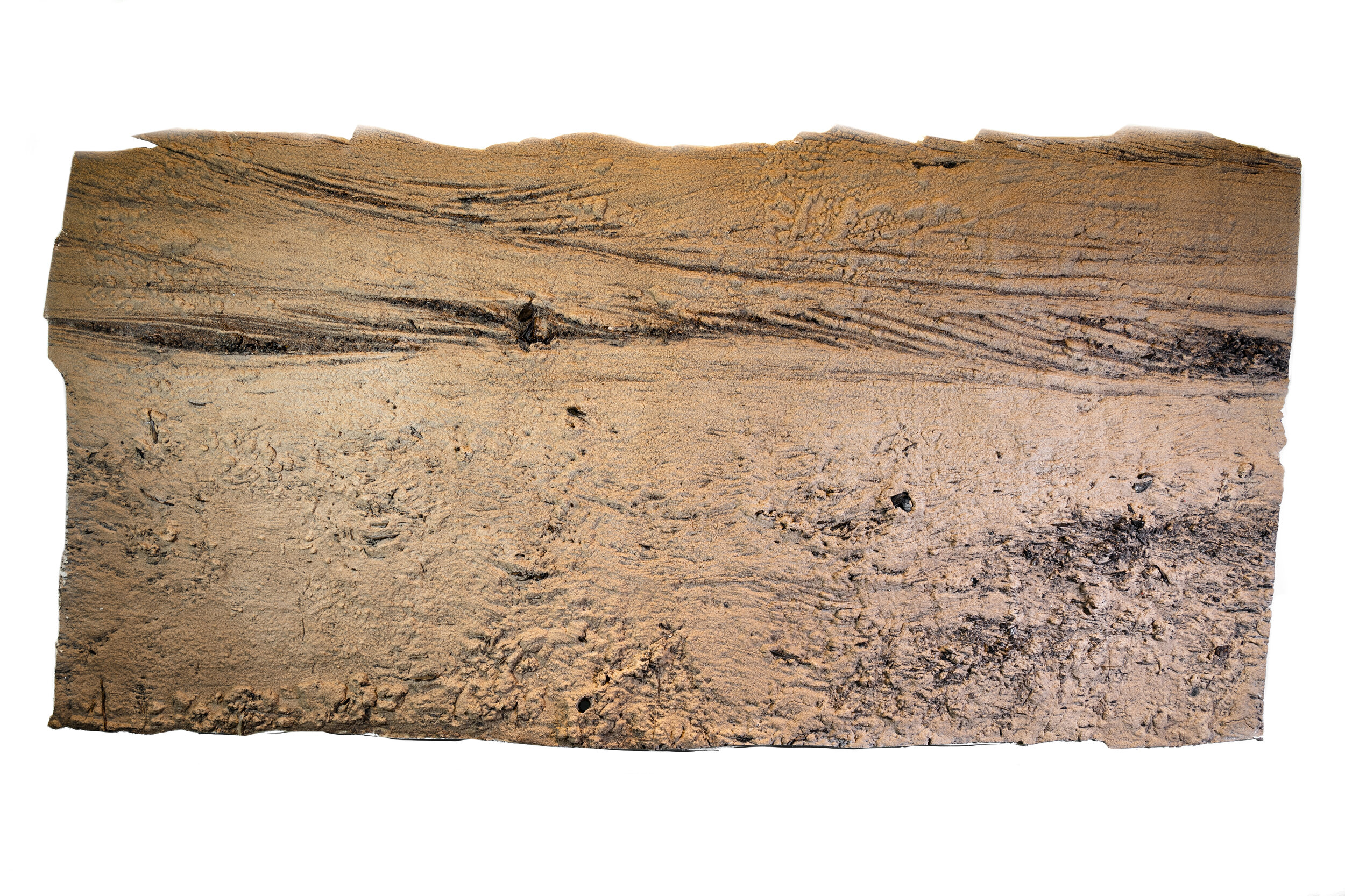Buffalo Bayou
In August 2017 Hurricane Harvey made landfall on the gulf coast of Texas. With peak rainfall accumulations of 1,539 mm (60.58 in), in Nederland, Texas, Harvey was the wettest tropical cyclone on record in the United States (Roth, 2018). In the areas surrounding Houston, floodwater carried sediment as it swept downstream, utilizing the bayou system to channel and move floodwaters out to the Gulf of Mexico.
“Some of this sediment built up in Buffalo Bayou Park, creating large deposits and a prime opportunity for making sand peels in our own backyard.”
The intention was to combine our skill sets to create both science and art objects that would tell a story of Hurricane Harvey and consider the context of past and for future storms the city of Houston.
Sand Peel Sculptures
13 sand peel sculptures from sediment deposits left by 2015 Memorial Day flood, 2017 Hurricane Harvey, and 2019 Hurricane Imelda in Buffalo Bayou Park were created from October 2017 - November 2019.
Buffalo Bayou Field Guide
Buffalo Bayou Park provides an environment to examine the archives of a major flow event from an artistic and scientific perspective and discuss how we prepare for the next major flow event.
Emerge: Fluvial Tapestries from Hurricane Harvey
An exhibition of the Hurricane Harvey sand peel sculptures and related artwork that presents a natural narrative of Hurricane Harvey in relation to Buffalo Bayou’s water levels and the sediment deposits left after the storm. On view at the Buffalo Bayou Park Sunset Coffee Building Gallery Fall 2018.
Geogulf Convention 2019
An exhibition featuring the Hurricane Harvey sand peel sculptures at the annual Gulf Coast Association of Geological Societies meeting from October 23-25, 2019 in Houston Texas.
GeoGulf: Where the Entire Greater Gulf of Mexico Comes Together!




